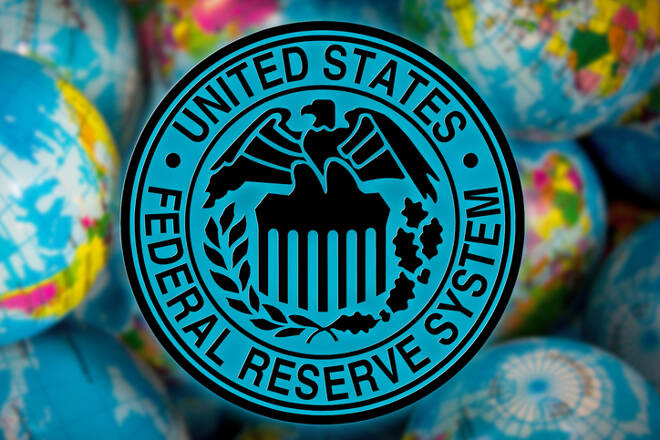Advertisement
Advertisement
Increased Tensions at Fed as Central Bank Moves to More Normal Interest Rate Levels
By:
The Federal Reserve faces a much tougher decision than gradually raising interest rates as U.S. interest rates near a “neutral” level where they neither boost nor slow the economy.
After a week filled with renewed geopolitical concerns, turned their focus on a pair of economic reports and a few Fed speakers on Friday before moving on to a long holiday week-end. The U.S. Durable Goods report was mixed, while the Revised University of Michigan Consumer Sentiment report came in weaker than expected.
U.S. Federal Reserve Chairman Jerome Powell offered no clues about the direction of interest rates, while FOMC Members Kaplan, Bostic and Evans discussed the risks in bringing interest rates to “neutral”.
U.S. Durable Goods – Business Spending on Equipment Picking Up
According to the Commerce Department, Core Durable Goods Orders rose 0.9% versus an estimate of 0.5%. The previous report showed a rise of 0.1%.
Overall orders for durable goods, items ranging from toasters to aircraft that are meant to last three years or more, dropped 1.7 percent in April as demand for transportation equipment tumbled 6.1 percent. That followed a 2.7 percent increase in durable goods orders in March.
U.S. Consumer Sentiment – Smaller Income Gains Expected
U.S. consumer sentiment came in weaker than expected on Friday in the final reading of May. The University of Michigan’s survey of consumer attitudes reached 98 in the latest reading. Economists surveyed by Reuters expected it to hit 98.8, the same from a month earlier.
“The May survey, however, found that consumers anticipated smaller income gains than a month or year ago, even though they anticipate the unemployment rate to stabilize at its current 18-year low,” chief economist Richard Curtin said in a statement.
Fed Chair Jerome Powell – Offers No Further Information about Monetary Policy
Banking regulation has gotten stricter and more transparent in the days since the financial crisis, though more adjustments are likely ahead, Federal Reserve Chairman Jerome Powell said Friday.
Powell stressed testing as one particular area where openness has both helped stabilize the financial system and given the public more confidence that institutions are prepared for the next crisis. Powell also largely praised the post-crisis steps, though he said progress has to continue in reviewing the rules to make sure they’re working as intended. Finally, Powell promised to continue to review how the regulatory framework is communicated to the public and banks.
Powell did not delve into monetary policy and offered no clues as to how he feels about where interest rates are headed.
FOMC Members – Facing ‘Agonizing” Debate as Rates Near Neutral Level
The Federal Reserve plans to continue tightening monetary policy gradually for now, but it faces a much tougher decision as U.S. interest rates near a “neutral” level where they neither boost nor slow the economy, several policymakers indicated on Friday.
“I’m not yet there on what we should do once we get to neutral,” Dallas Fed President Robert Kaplan said at a conference where Atlanta Fed President Raphael Bostic and Chicago Fed President Charles Evans also spoke.
“I think we are going to have quite an agonizing debate for lots of reasons, including the shape of the yield curve,” Kaplan added.
“Sometimes I worry there’s an illusion of precision that we know to the very decimal place exactly where we are at any moment, so that we can say, this is exactly where we should stop, and I don’t think that that’s true,” Bostic said at the Dallas Fed conference.
“Once we get kind of in the neighborhood (of the neutral rate), then you have to see what’s happening in the marketplace to get the signals as to, have you gone too far, or have you not gone far enough,” Bostic added.
Evans cautioned about going too fast and acting too slowly. “You wouldn’t want inflation to pick up too much. That could be consistent with a faster pace, and that would be cautious in terms of outcome,” he said.
About the Author
James Hyerczykauthor
James is a Florida-based technical analyst, market researcher, educator and trader with 35+ years of experience. He is an expert in the area of patterns, price and time analysis as it applies to futures, Forex, and stocks.
Did you find this article useful?
Latest news and analysis
Advertisement
